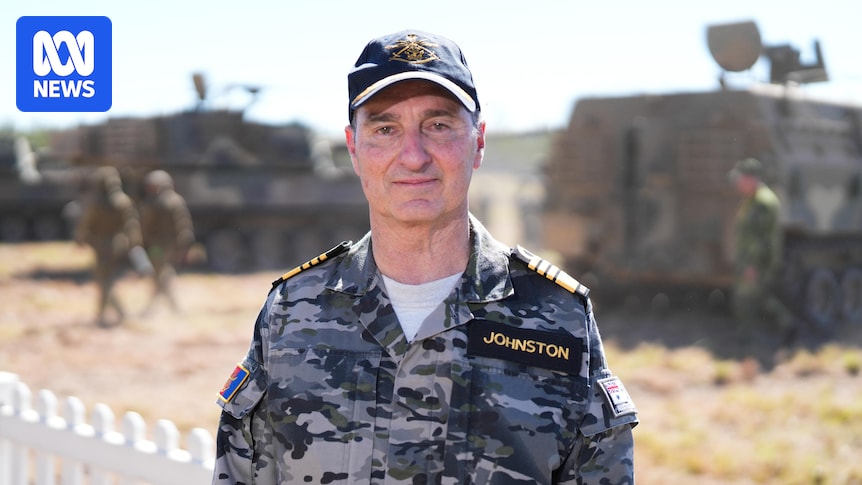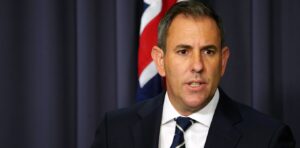
The Australian Defence Force (ADF) must enhance its management of taxpayer dollars on large-scale projects, according to the nation’s highest-ranking military official. Chief of Defence Admiral David Johnston has acknowledged the need for improvement as the military gears up for the expansive AUKUS project, currently under scrutiny by the U.S. administration.
Recent years have seen the Defence sector struggle with cost overruns and delays, accumulating nearly a century of project delays, as some reports suggest. Meanwhile, Australia faces pressure from its key ally, the United States, to elevate its defence spending to 3.5% of GDP, potentially reaching $287 billion over a decade.
Challenges and Strategic Initiatives
The acting Defence Minister has noted that the review by the U.S. administration remains incomplete, defending Australia’s approach to defence spending. Admiral Johnston, in an interview with the ABC, admitted past failures and emphasized the need for improvement.
“We aim to do better,” he stated. “We want to see every acquisition project that we are on, deliver on time and capability.”
However, he also highlighted the inherent risks in acquiring complex, cutting-edge technology necessary for national defence. “These are highly complex systems, by nature pushing the edge in capabilities — because that’s what you need when you’re looking at capabilities that provide for the defence of your country … [But] we do need to spend [public money] well,” he added.
Admiral Johnston defended the $45 billion Hunter Class Frigates project, which aims to deliver the first of six ships by 2032, expressing confidence in their future performance.
Pressure for Efficiency
Defence Minister Richard Marles underscored the need for the Department of Defence to improve its management of public funds. “We’ve been very open about the challenges that Defence has faced historically in terms of its ability to meet delivery,” Marles said.
“Delivery has to be a key focus, and we will look at everything we need to in terms of sharpening our delivery so that we get the best quality in the defence spend. And that includes, if needs be, pursuing bureaucratic reform.”
Military Exercises and Strategic Shifts
Amid these discussions, the ADF is showcasing its capabilities through the “Talisman Sabre” exercises, involving nearly 40,000 defence personnel from 19 countries. This demonstration includes the newly-acquired “HIMARS” long-range missile system, capable of striking targets up to 500 kilometers away.
The ADF is shifting its focus towards defending Australia’s northern approaches, moving away from distant missions that have dominated its agenda for the past two decades. Admiral Johnston has cautioned that Australians may need to view the country as a “homeland from which we will conduct combat operations,” a significant shift in military strategy not seen since World War II.
Beyond AUKUS
While the 2022 Defence Strategic Review emphasized the acquisition of nuclear submarines as transformative for the Australian navy, Admiral Johnston has been keen to highlight other strengths. “The submarine is a very important capability, but it’s not the only capability that we’re progressing,” he noted.
“When you look at our strategy and you understand the breadth of capabilities that we are bringing, prioritising long-range strike capabilities, the work around our own northern infrastructure to enhance capacity, innovation in a range of sectors.”
The $368-billion AUKUS deal, which will provide Australia with nuclear-powered submarines, is under review in the U.S. Admiral Johnston maintains ongoing dialogue with U.S. counterparts, stressing the importance of Australia’s perspective during the review process.
Considerations for Sovereignty
Research for the U.S. Congress has proposed an alternative to AUKUS, suggesting Australia host U.S.-flagged submarines long-term. From 2027, the U.S. and UK plan to base nuclear-powered submarines at HMAS Stirling near Perth. However, Admiral Johnston insists on the importance of Australian-flagged submarines.
“That firmly remains our objective — to have an Australian national capability that brings all of the extraordinary capacity that a nuclear submarine brings, but having one that is under our national control,” he affirmed.
Defence Minister Marles echoed the sentiment, emphasizing sovereignty as crucial in pursuing a nuclear-powered submarine capability. “We need a long-range, long-term submarine capability, we only achieve that in the future by having a nuclear-powered submarine capability,” he stated.
As Australia navigates these complex defence challenges, the focus remains on improving project management and ensuring sovereignty in its defence capabilities, setting the stage for strategic advancements in the coming decades.





